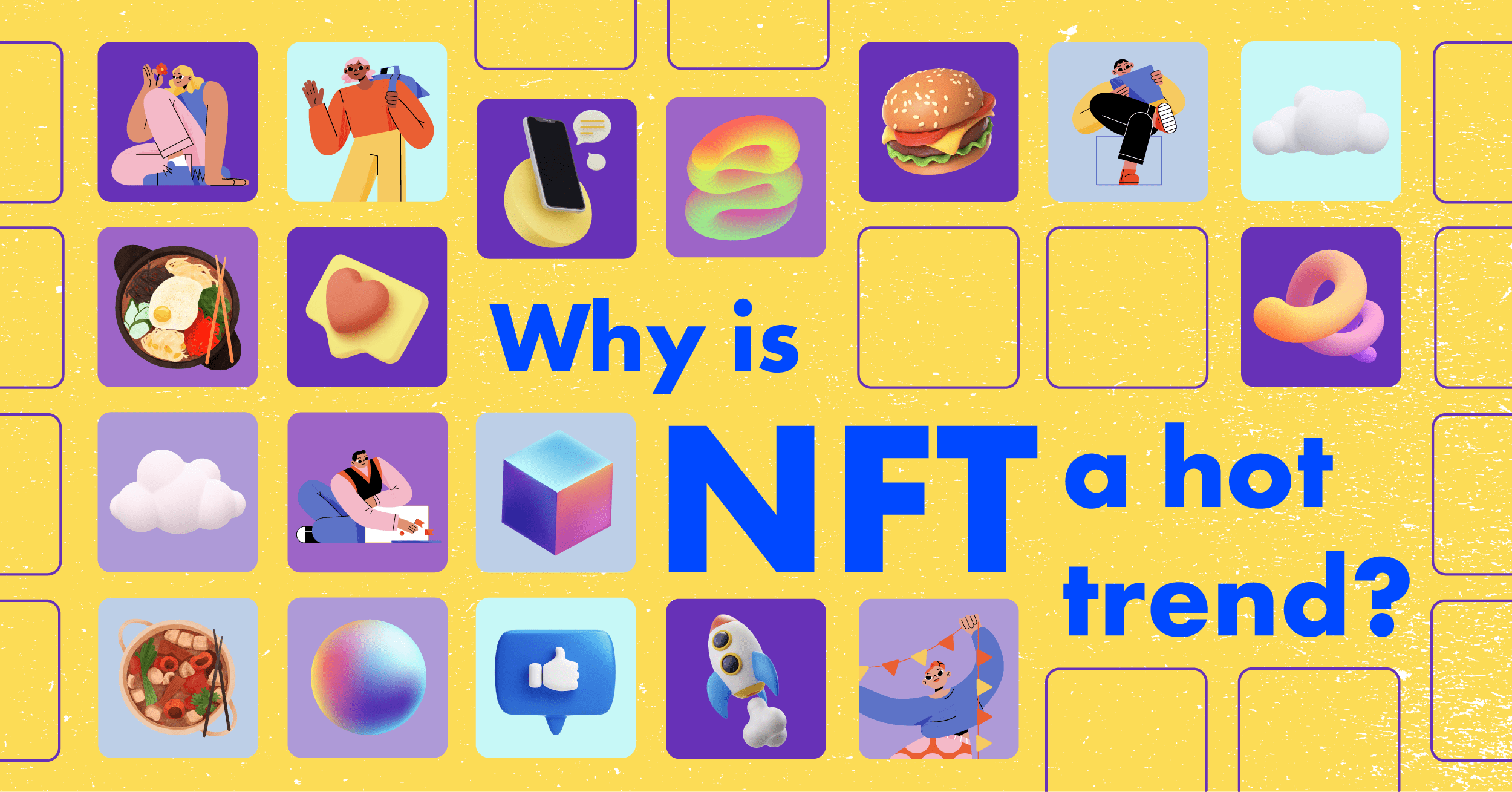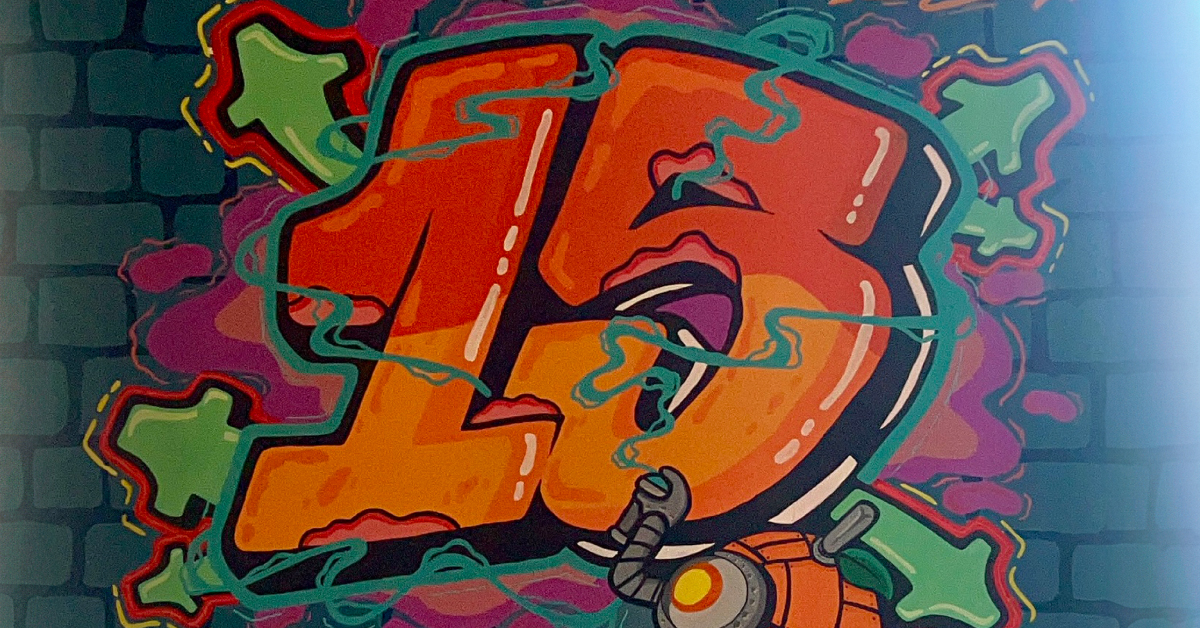With the metaverse and its ever-changing technology, transactions and investments are seen to approach the digital world as well. Digital art, in-game items, tweets, and even NBA top shots were seen generating income through Non-fungible tokens or NFT. Numerous celebrities, musicians, designers, and big brands are jumping into this digital trend for various reasons.
What is NFT?
An NFT, or non-fungible token, is an asset with unique details stored and bought online. An NFT artwork can be digital or linked to represent a physical thing. This could be a representation of an asset wherein the buyer receives a sort of certificate of ownership to strengthen its authenticity. Basically, you are given proof that you own a specific asset or property. Furthermore, these NFTs are stored in a digital shared database, also known as a blockchain.
Moreover, non-fungible means irreplaceable, which means each of these NFTs is distinct and cannot be replaced with another thing of equal value.
Now that we have covered the overview of what an NFT is, we should briefly take a look at how different it is from a fungible token. So what exactly is the difference between non-fungible tokens and fungible tokens?
Here’s a comparison:
- Fungible Tokens. Let’s say you have ten dollars. You can exchange it for two $5 bills and still have the same value. Thus, you were able to divide your whole ten dollars into smaller units, with the worth being retained. In a nutshell, fungible tokens are things you can exchange for equal value.
- Non-Fungible Tokens. We can take the Mona Lisa painting by Leonardo da Vinci as an example. This art is irreplaceable and one-of-a-kind. Since there is only one Mona Lisa painting, it retains its authenticity with the assurance that this is the only painting in the whole world. The same goes with NFTs; these are items you get a hold of with unique identification codes and metadata that distinguish them from each other.
What makes NFT unique?
Through blockchain technology, creators have the freedom to control the reproduction of their work. They can create a ledger wherein only a specific number of copies of their work can be released online, with a royalty percentage in the bag. Think of it as a crypto collectible that you can invest in among NFT enthusiasts.
Another thing is that every single cryptographic asset has its own unique codes and such that make its identification unlike any other.
Some interesting data about NFT:
- NFT market would grow into a $13.6 billion industry by 2027
- The total sales of NFT art reached approximately $1.7 million from August 2021 to February 2022.
- 23% of millennials in the US alone collect NFTs
- Around 15,000 to 50,000 sales happen as NFT sales now range anywhere between $10 million and $20 million per week.
- Over the projected period, the demand for non-fungible tokens is anticipated to soar at CAGRs of 35.3 percent and 22.2 percent in the Americas and EMEA, respectively.
What makes up the NFT?
Through blockchain technology, creators have the freedom to control the reproduction of their work. With a specific number of copies available online, some designers can have a royalty percentage in the bag.
- The asset. This means the actual artwork or project of the designer. It can be digital or a representation of a physical real-world object like art, music, in-game items, and videos.
- The blockchain. This is a database that stores the virtual tokens as well as the payment mode if you choose to spend through your crypto wallet.
Where do NFT transactions occur?
NFT Marketplaces are the digital platforms wherein you can buy, sell, trade, view, or *mint NFTs. In order to transact, you would need to set up your account along with your crypto wallet and fund it. These marketplaces display a wide range of products, with each of them having a niche, such as digital assets or virtual real estate.
1. OpenSea
Founded in 2017, OpenSea has grown to become the largest marketplace for crypto collectibles and non-fungible tokens (NFTs). It's beginner-friendly; you can create an account for free, and there are a lot of NFT assets to choose from.
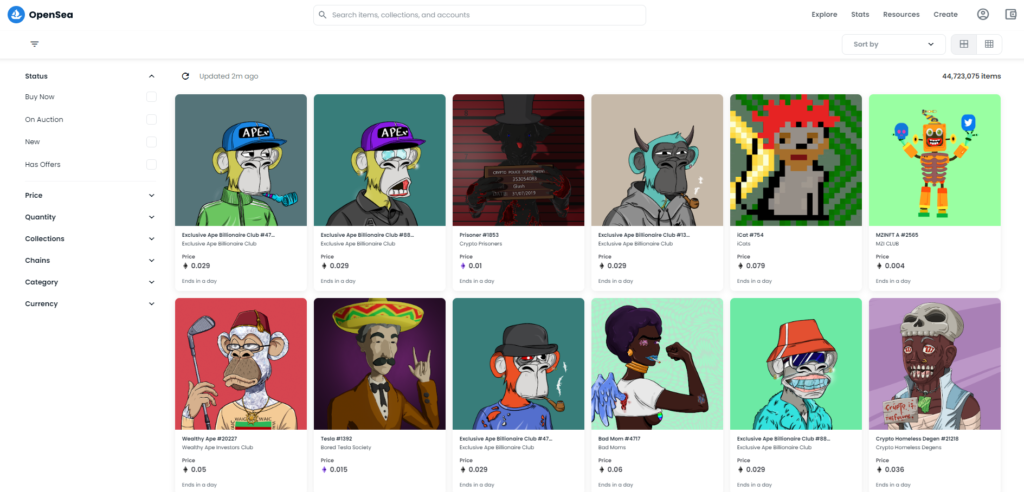
Source: opensea.io/assets
2. Rarible
The Rarible marketplace is also a great place to check out NFTs, art, collectibles, and video game assets. A great thing about this marketplace is that you have the option to pay with your credit card.
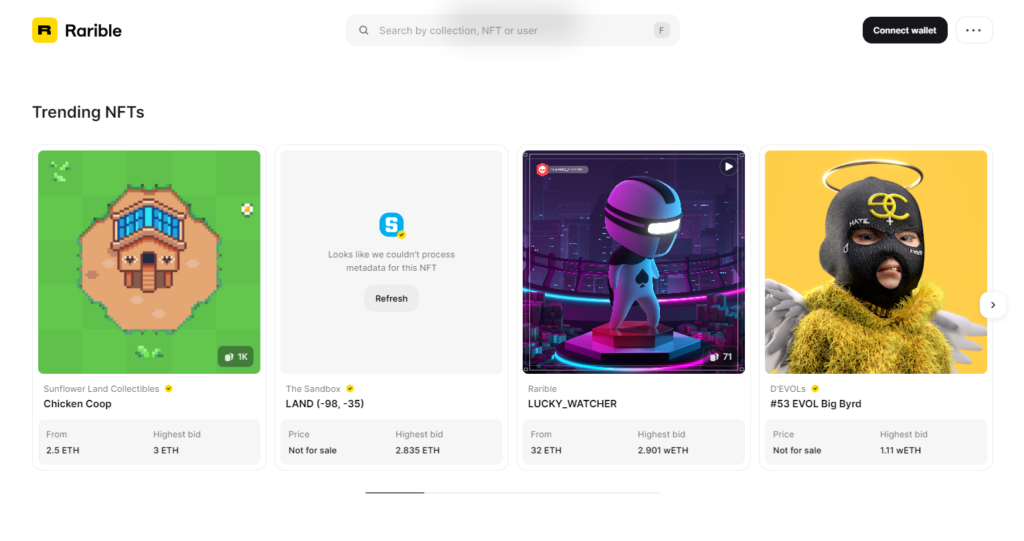
Source: rarible.com
3. NBA Top Shot Marketplace
You heard that right—you can have your own NBA moments in your NFT collection through the NBA Top Shot. It is an NFT space where basketball fans come together and even trade pieces of sports history, from their favorite teams, players, and sports moments.
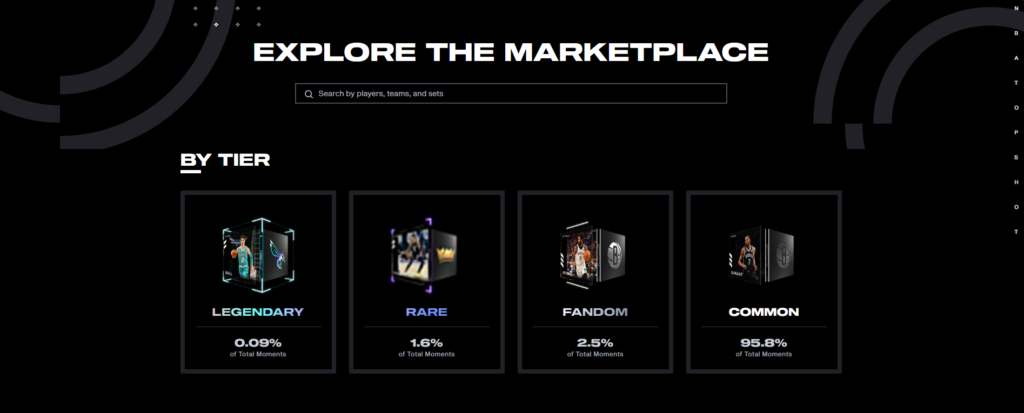
Source: nbatopshot.com/marketplace
Well-known brands have embraced the Metaverse through NFTs.
Here are some NFT examples from brands in which breathtaking NFT artworks and even NFT games are produced and acquired online:
Coca-Cola
This beverage brand, in partnership with Special Olympics International, made NFT collectibles in connection with International Friendship Day. Their NFTs were created through avatar systems and 3D animation frameworks by Tafi, an avatar company. The NFT accumulated a winning bid of $575,883.61 in an online auction.
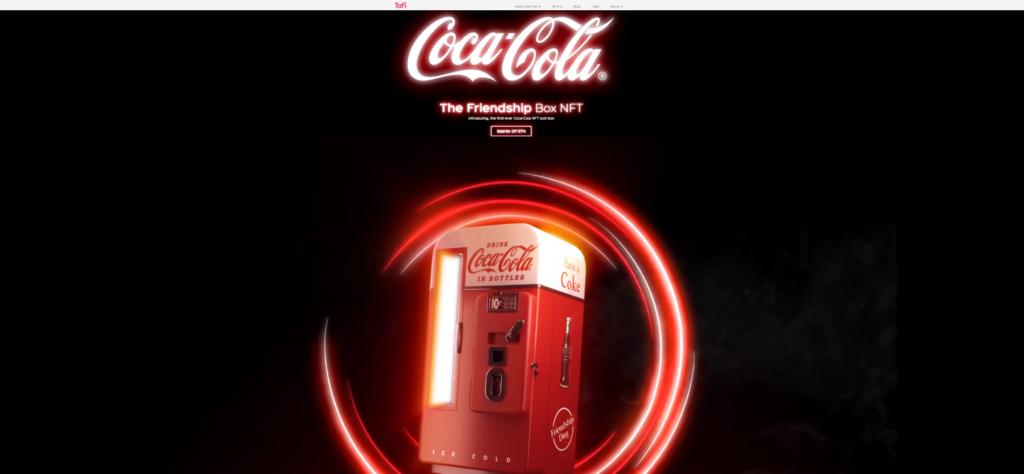
Source:maketafi.com/coca-cola-nft
Axie Infinity
Similar to the infamous Pokémon Go, players can buy and choose their pets, called Axies, to battle, breed, collect, raise, and build kingdoms in the game. In July 2022, Axie Infinity’s NFT sales jumped 198% over the last week compared to the previous period.

Source: axieinfinity.com
Beeple
If you are an NFT starter or an expert, this NFT artwork would be familiar. Made by designer Mike Winkelmann, this was sold at a whopping price of $69 million at Christie’s. This is the second most expensive NFT ever created as of date, behind The Merge by Pak.
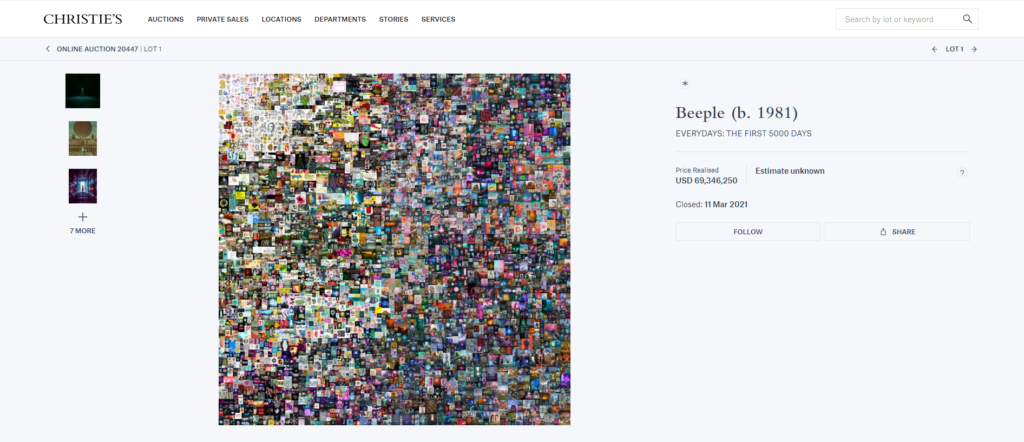
Source: onlineonly.christies.com/s/beeple-first-5000-days/beeple-b-1981-1/112924
What’s in it for you?
If you then decide to indulge or sell some non-fungible tokens yourself, then you are in for a treat. Here are some of the advantages NFTs can bring to the table:
- Designer
First and foremost, NFTs are a great way to market your art online. Let us assume that you are a designer who recently sold an art piece through NFT. You don’t have to worry since you can still retain the copyright and reproduction rights of your NFT artworks, just like with physical artwork. Moreover, in some marketplaces, when your assets boom and are traded from one to another, you can earn a percentage.
- Buyer
On the buyer’s side, one thing that no one copies is the ownership you have with the NFT. Through this, you can post the NFT you recently bought on your social media accounts and even turn it into a profile picture—your call.
NFT terms that you may want to note:
- 1:1. “One of One” is a rare NFT available based on its mint number. It is like a single edition of the artwork that you get. The closer the number is to 1, the more valuable it is. Overall, if you own a 1:1 NFT, it means you are the only person that owns the art.
- Blockchain. A blockchain records information about all transactions. It’s an immutable ledger online, distributed among all members of the network.
- Cryptocurrency. This is a form of decentralized digital currency that uses cryptography as a means of securing transactions. This has many types, like Bitcoin, Ethereum, and DogeCoin.
- Metaverse. A virtual and immersive space wherein one can interact with other users. Focused on 3D social connectivity, users are typically placed in stimulating environments with various customizable avatars and clothing options to choose from.
- Minting. This meant creating or producing an NFT. The NFT owner uniquely publishes the NFT artwork on the blockchain so that buyers are able to purchase it.
NFT Takeaways
Non-fungible tokens have been around for just a couple of years. For NFTs, the sun shines brightly on their future. With the continual technological enhancements, NFTs can become your box of opportunities to make a name for yourself as a designer or to create a nice investment.
However, it is important to keep in mind that NFTs are based loosely on what the majority deems as "valuable.” So an open mind but a careful hand are highly advised. Just like with any online transaction, it's best to thoroughly study its pros and cons of it. Do research, observe the NFT prices, and understand how all the crypto works.
